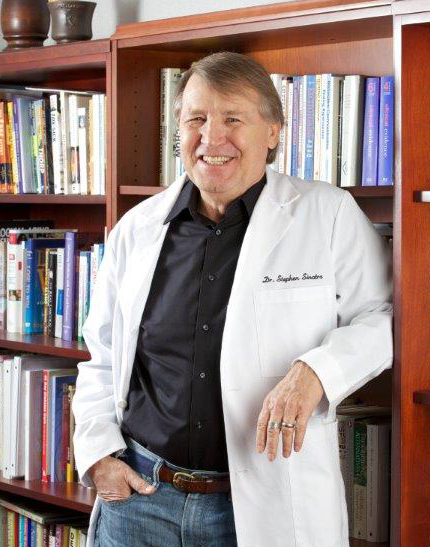By Stephen T. Sinatra, M.D., F.A.C.C., F.A.C.N., C.N.S., C.B.T.
The ancients knew it. Modern research has confirmed it. Physical activity protects and heals the body.
Cardiologists, me included, have long promoted regular exercise to patients because of the multitude of benefits.
But, as I can assure you after thousands of consultations with patients, not everybody listens. The fact is that too few heed the advice.
I can also assure you that those who do enjoy more energy and better muscle tone. Their bodies function better because increased blood flow and oxygen uptake from exercise bring more nutrients and oxygen to the heart and all the cells of the body.
I’ve seen it play out repeatedly with patients. You exercise and you extend your ability to be more physically and mentally functional longer in life.
Research confirms my own clinical observations.
Studies have repeatedly shown that exercise reduces the incidence of coronary heart disease, diabetes, and osteoporosis. In one sweeping 2006 scientific review, researchers pointed out that regular exercise also positively influences brain and nervous system function, with great implications for the prevention and treatment of obesity, cancer, depression, the decline in cognition associated with aging, and neurological disorders such as Parkinson’s disease, Alzheimer’s dementia, and head and spinal cord injury. Exercise also reduces the effects of stress that may counteract high blood pressure, heart failure, oxidative stress, and immune deficits.
These are huge dividends.
By not exercising and leading a sedentary lifestyle, here’s what you can look forward to: an increased risk of many infirmities that ruin and shorten life. According to the World Health Organization, sedentary living causes an estimated 2 million deaths annually, including 22 percent of heart disease deaths and 10 to 16 percent of breast cancer, colon cancers, and diabetes deaths.
If all this isn’t enough to get you off the couch and in motion, consider that if you have been relatively sedentary most of your life, you are likely to lose 30 to 40 percent of your muscle strength by the time you’re 65. By age 75, more than a quarter of American men and two-thirds of American women can’t lift a gallon of milk above their waist with one hand!
Experts say that approximately 80 percent of the American population doesn’t get enough physical activity. One of them, Frank Booth, Ph.D., of the University of Missouri, coined a term that puts the consequences into very stark perspective: the sedentary death syndrome.
So what exercise is best for you?
The answer is simple, and more simple than you think. The best exercise is the one you will do and keep doing.
I’ve learned that without a doubt there’s no point recommending exercise if the person you’re recommending it to won’t do it. I always liked to tell my patients to think of it as “movement” rather than “exercise.” That doesn’t sound like so much work, and, after all, the whole goal of exercise is to get out and get moving. Not to be a champion weight lifter or a marathon runner.
Two of the best forms of movement are also the most pleasant − walking and dancing. I love to do them both. When I am home, I try to take a daily walk with my dog, and, as often as the opportunity presents itself, I like to dance with my wife. I also do yoga to maximize my flexibility and Pilates to fortify my core strength.
Want to lose a little weight? Exercise burns calories and increases body metabolic rate, which means that your body burns more calories even as you rest. A fit person has a higher metabolic rate than an unfit person.
If you’ve always heard the slogan, “no pain, no gain,” you might be surprised to learn that you don’t need pain to achieve gain. In fact, high-intensity exercise and its resulting pain can be counterproductive and even life threatening − for adults of all ages. For example, the leading sports for sudden death are racquetball, handball, running, and jogging.
The concept of physical activity is simple: move yourself. You don’t have to run, jog, or even join a gym. You just have to get moving.
If you’ve not been active for a while, talk to your doctor before beginning a strenuous program. Your physician may want to carry out a treadmill exam and give you a specific exercise prescription.
But you have to do it and do it regularly. If you do, it won’t take long before you see the evidence of a grateful and responsive body.
References
- Dishman RK, Berthoud HR, Booth FW, et al. (2006), Neurobiology of exercise. Obesity, 14: 345–356. doi: 10.1038/oby.2006.46
- World Health Organization. Global Strategy on Diet, Physical Inactivity, and Health, WHO.org, accessed Jan. 24, 2013.
© 2013 HeartMD Institute. All rights reserved.











